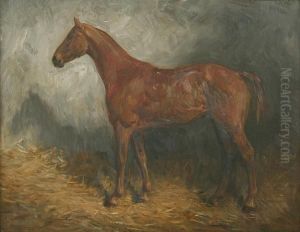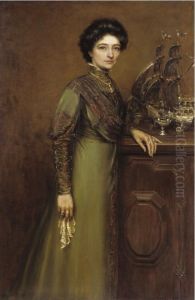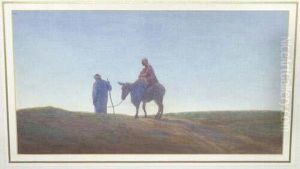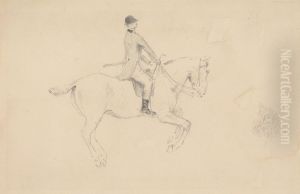Brian Hatton Paintings
Brian Hatton was a promising British artist whose potential was tragically cut short by the First World War. Born in Hereford, England, in 1887, into a family that supported his artistic talents from a young age, Hatton showed exceptional promise as a painter. His early works, which included landscapes, portraits, and scenes of rural life, demonstrated a remarkable sensitivity to light and color, drawing comparisons to the works of the Impressionists.
Hatton's education in art was thorough and varied. He studied at the Hereford School of Art before moving on to the Royal Academy Schools in London, where he further honed his skills. His style was eclectic, drawing on influences from the Old Masters as well as contemporary movements, yet he always maintained a distinct, personal vision that set his work apart from that of his peers.
Despite his burgeoning career and the acclaim his work received, Hatton's life took a dramatic turn with the outbreak of the First World War. Like many men of his generation, he was swept up in the patriotic fervor of the time and enlisted in the British Army. His experiences at the front would have a profound impact on his art, introducing darker themes and a more somber palette to his work. Unfortunately, Hatton's artistic evolution was abruptly halted when he was killed in action in 1916, at the age of 29.
Today, Brian Hatton is remembered as one of the many artists whose lives and careers were tragically shortened by war. His surviving works, though limited in number, continue to be celebrated for their beauty and emotional depth. They offer a poignant glimpse into the world of a talented artist whose full potential was never realized, making him a poignant figure in the history of British art.



